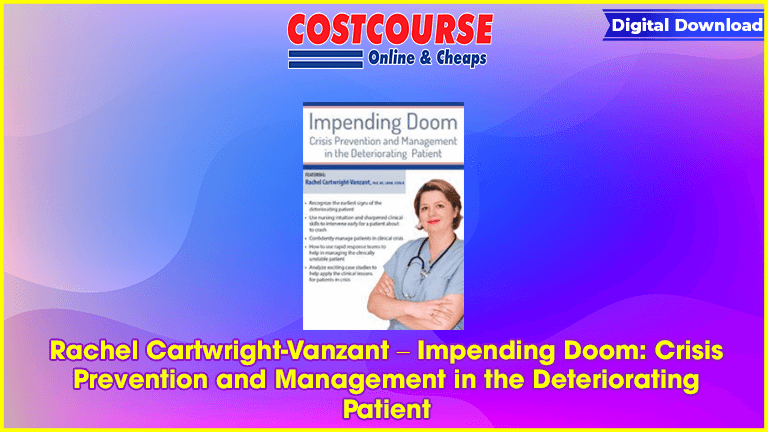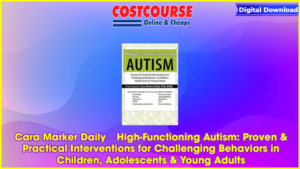Description
Recognize the earliest signs of the deteriorating patient
Use nursing intuition and sharpened clinical skills to intervene early for a patient about to crash
Rachel Cartwright-Vanzant – Impending Doom: Crisis Prevention and Management in the Deteriorating Patient
Confidently manage patients in clinical crisis
How to use rapid response teams to help in managing the clinically unstable patient
Analyze exciting case studies to help apply the clinical lessons for patients in crisis
Do you as a nurse/clinician recall a patient who seemed to deteriorate in front of your eyes and wonder if anything could have prevented this clinical crisis?
What do you do with the subtle signs and symptoms you identify in your patient that are yet within normal limits but your nursing intuition tells you that there is something wrong?
How do you learn the early clinical signs of impending doom in the patient and effectively intervene before the crisis occurs?
Ideally, your job is not to run a good code but to prevent the code from ever happening. In order to do that, you have to know what the early warning signs are, perceive them, interpret them within the whole clinical picture, and act for the benefit of the patient.
Subclinical signs – the early first warning signals of a problem – are examined in this workshop. You will leave with a clearer understanding of the body’s complex, interrelated organ systems and be able to break them in to their component parts to understand how one organ system can cause a sign or symptom in another organ system.
Today’s nurses care for more patients with higher acuity than ever before. In order to forestall crisis, you have to know who is at risk and recognize the warning signs, however subtle they initially may be in appearance. Hindsight is 20/20. The art and science of nursing, the vital difference in effective nursing, is in the ability to “see it comingâ€. Rachel Cartwright-Vanzant, PhD, MS, LHRM, CCRN-K, will share with you effective and put-to-the-test strategies to detect clinical changes in the deteriorating patient.
Handouts
077490 Manual (2.41 MB) 59 Pages Available after Purchase
Outline
Sepsis Crisis
What are the 3 most likely causes of a sepsis crisis
Three cardinal signs of sepsis
Understanding diagnostic tests to differentiate sepsis from other possibilities
Summary of the current evidence-based findings
Complications of illness
Cardiovascular Crisis
(Acute MI, Cardiogenic Shock, Pulmonary edema, TIA/CVA)
What are the common causes of all cardiovascular diseases
Symptomology differences between genders in cardiovascular disease
Examination clues that help you recognize a cardiovascular crisis
What diagnostic tests, labs, x-ray, imaging can help with diagnosis of a CV emergency
Nurse’s role managing a cardiovascular crisis
Anaphalaxis Crisis
Do you know the typical causes of anaphalaxis?
Signs/symptoms to look for in patients experiencing anaphalaxis
What quick nursing actions can save your patient’s life in anaphalaxis?
Medications that can avert an anaphalaxis crisis
Diabetic Crisis
(Ketoacidosis, Hyperosmolar Syndrome)
Key differences between ketoacidosis and hyperosmolar syndrome
What subtle signs do patients display when heading towards a diabetic crisis?
Important labs that give clues in diabetic crisis and its resolution
What nursing skills are important to help reduce diabetic crisis complications?
Pulmonary Crisis
(Status Asthmaticus, Acute Respiratory Failure)
Identify causes that can lead to a pulmonary crisis
Are all breath sounds alike?
When asthma is no longer simple
Which patients are likely to develop acute respiratory failure – and what can you do about it?
Hypovolemic Crisis
(GI bleed, Trauma, Internal Bleeding)
Causes of hypovolemic shock that you will encounter
When anxiety, restlessness, agitation and confusion are not a mental health problem
Are there earlier signs than hypotension that signal a hypovolemic crisis?
Fluids, Fluids, Fluids. Fluid resuscitation can save a life.
Rapid Response Teams
Effective use of the RRT in a clinical crisis
When to utilize the RRT
What team members are needed on RRT








